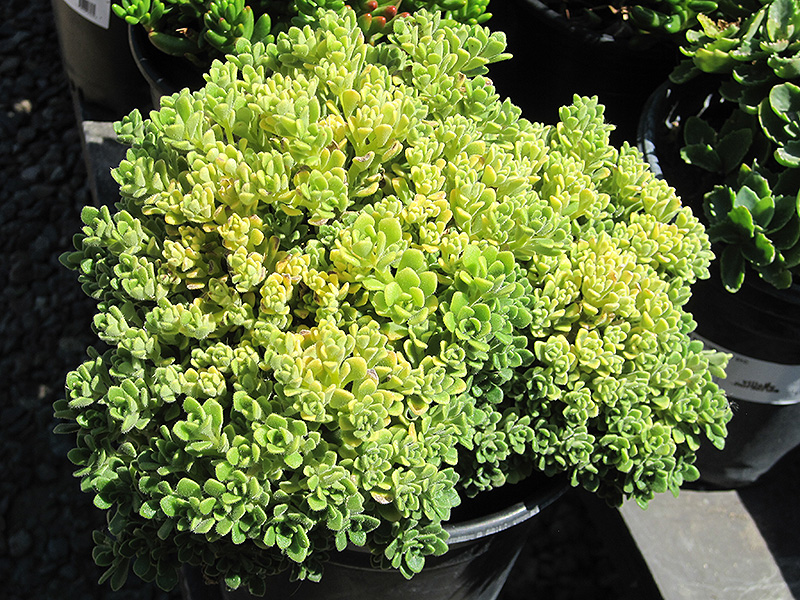Irish Bouquet Aeonium
Description
An exceptionally dense, succulent sub-shrub, presenting a thick mound of tiny green leaves; small, yellow, star shaped flowers rise above in late winter; has an incredible, fine texture, perfect for rock gardens, or containers; protect from frost
Landscape Attributes
Irish Bouquet Aeonium is a dense multi-stemmed annual with a mounded form. It brings an extremely fine and delicate texture to the garden composition and should be used to full effect.
Irish Bouquet Aeonium is recommended for the following landscape applications;
Planting & Growing
Irish Bouquet Aeonium will grow to be about 8 inches tall at maturity extending to 14 inches tall with the flowers, with a spread of 24 inches. Its foliage tends to remain low and dense right to the ground. Although it's not a true annual, this plant can be expected to behave as an annual in our climate if left outdoors over the winter, usually needing replacement the following year. As such, gardeners should take into consideration that it will perform differently than it would in its native habitat.
This plant does best in full sun to partial shade. It prefers dry to average moisture levels with very well-drained soil, and will often die in standing water. It is considered to be drought-tolerant, and thus makes an ideal choice for a low-water garden or xeriscape application. It is not particular as to soil type or pH. It is somewhat tolerant of urban pollution. This is a selected variety of a species not originally from North America. It can be propagated by division; however, as a cultivated variety, be aware that it may be subject to certain restrictions or prohibitions on propagation.
Irish Bouquet Aeonium is a fine choice for the garden, but it is also a good selection for planting in outdoor pots and containers. It is often used as a 'filler' in the 'spiller-thriller-filler' container combination, providing a mass of flowers and foliage against which the thriller plants stand out. Note that when growing plants in outdoor containers and baskets, they may require more frequent waterings than they would in the yard or garden.

